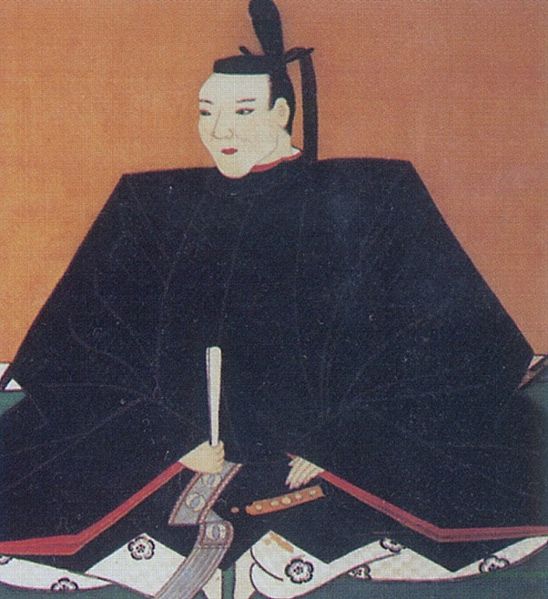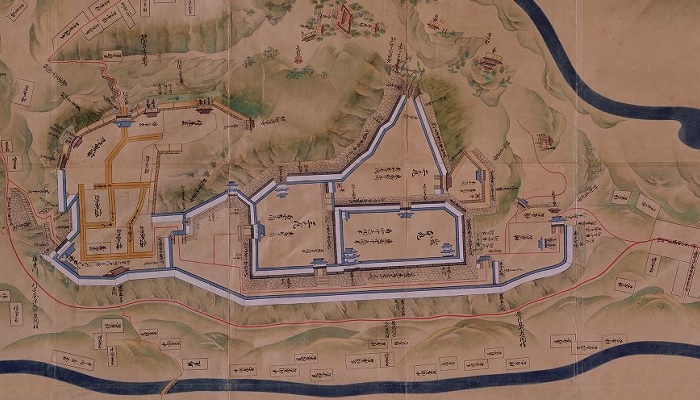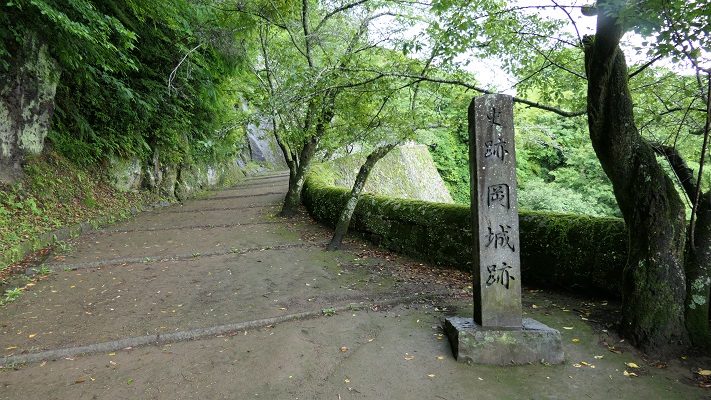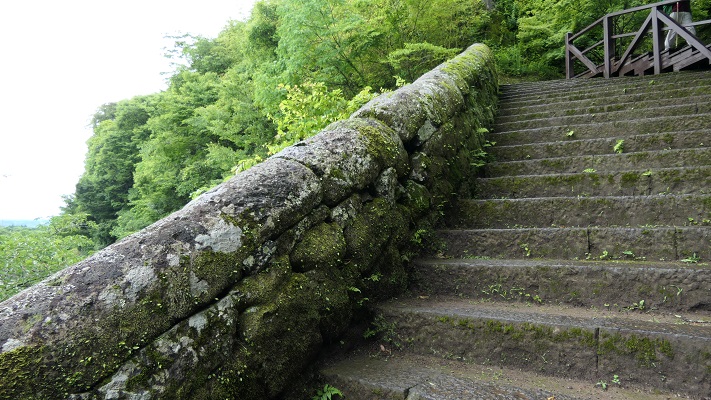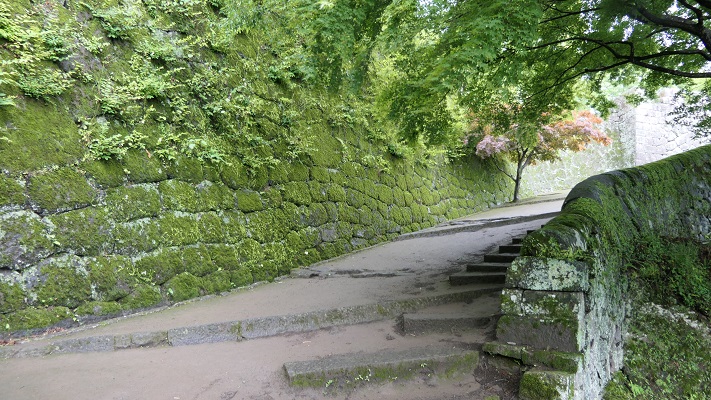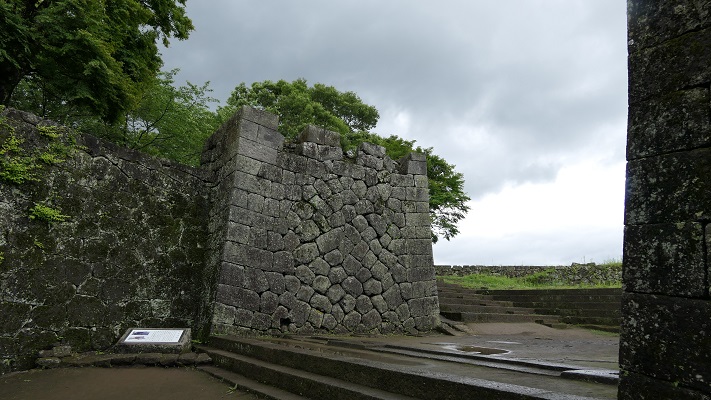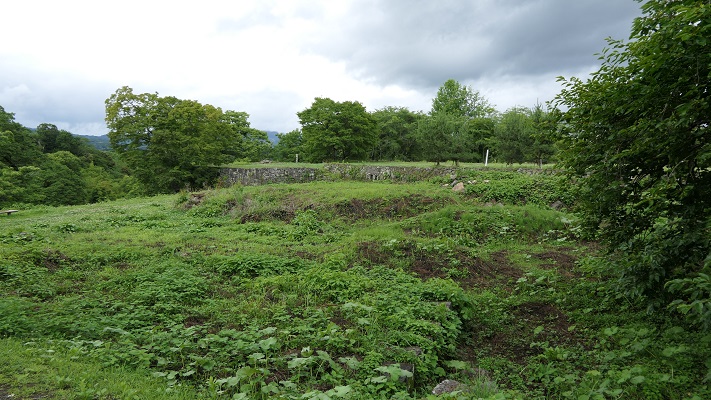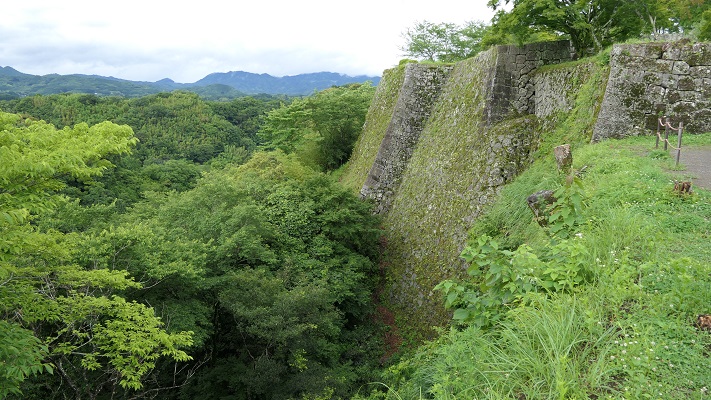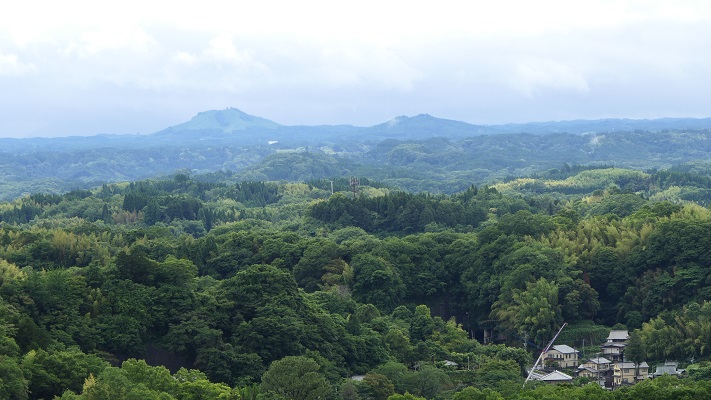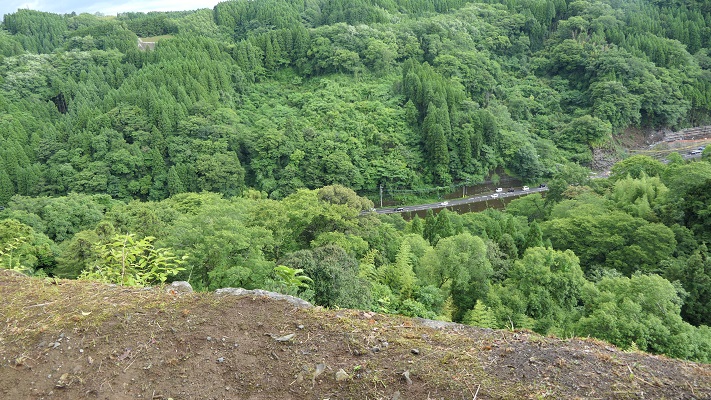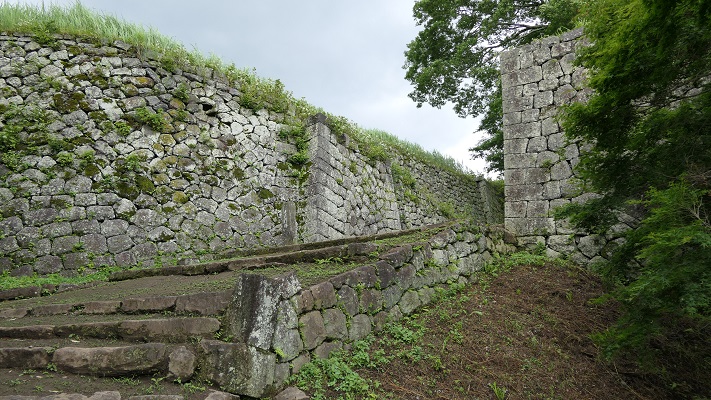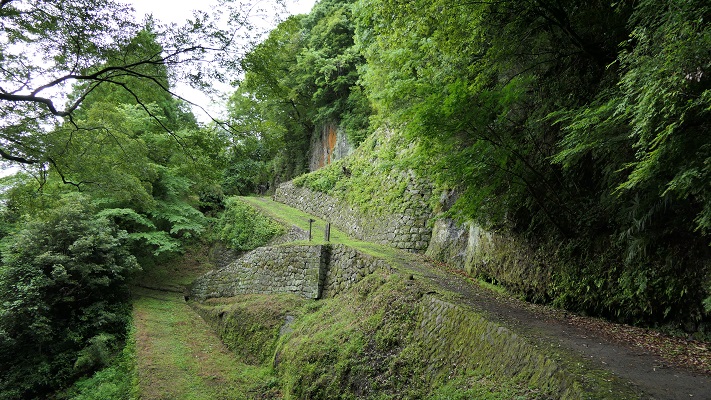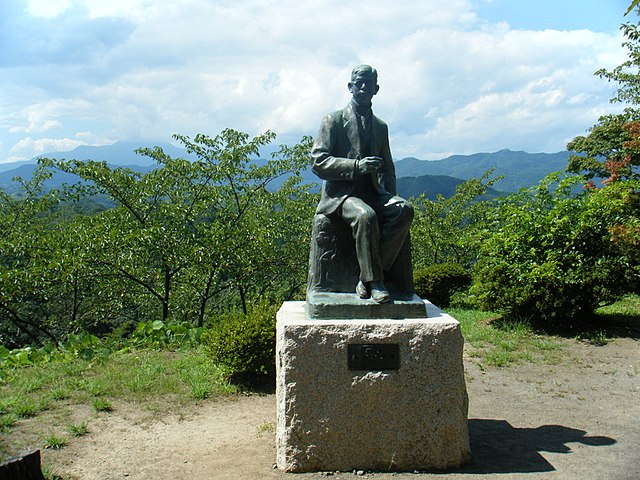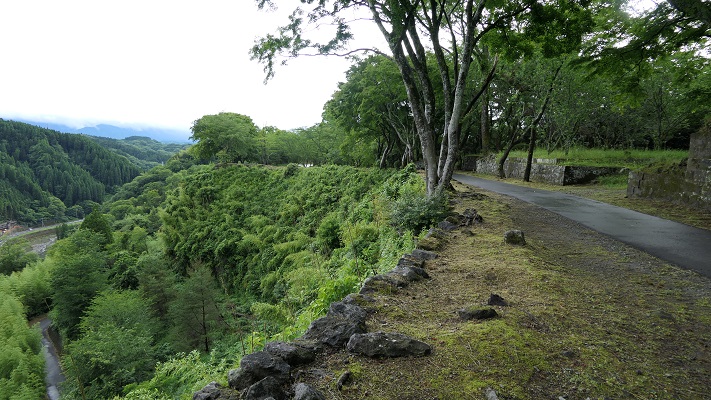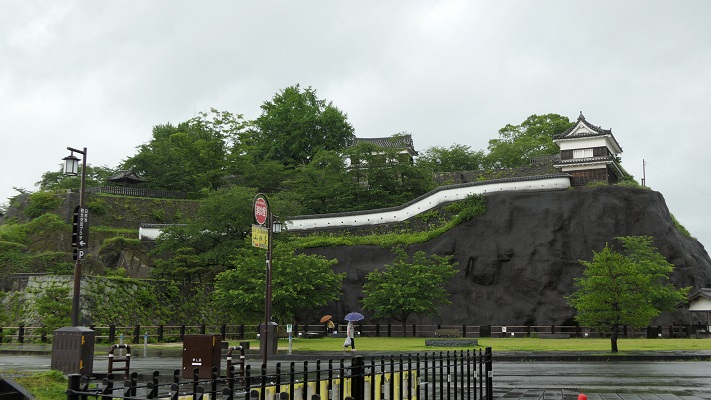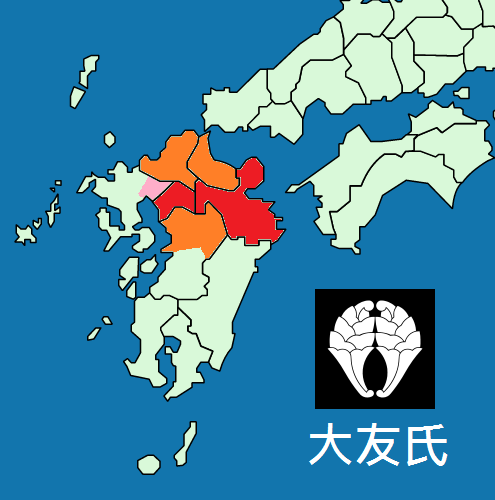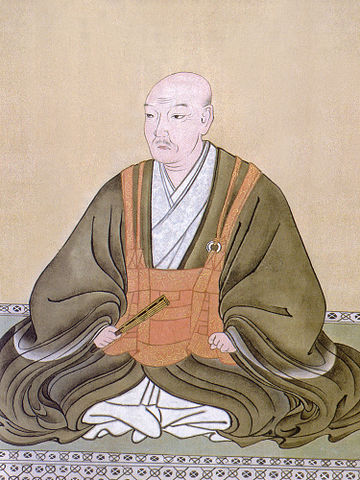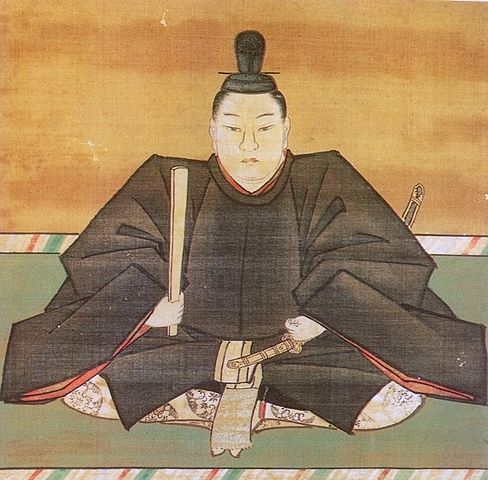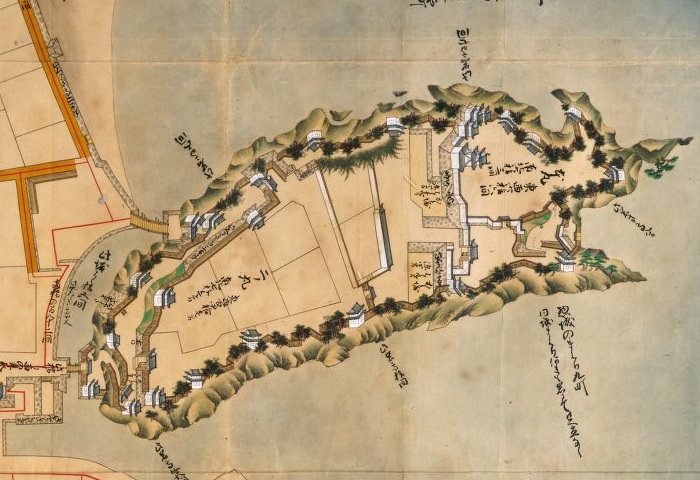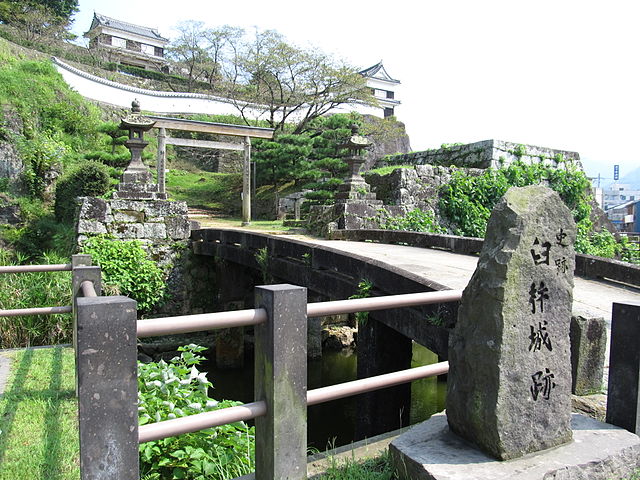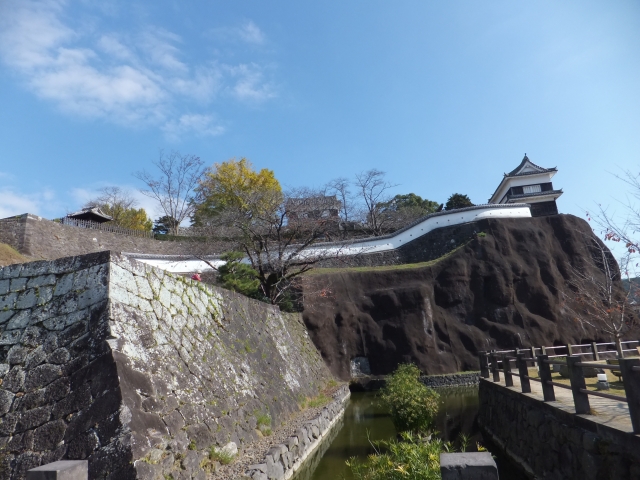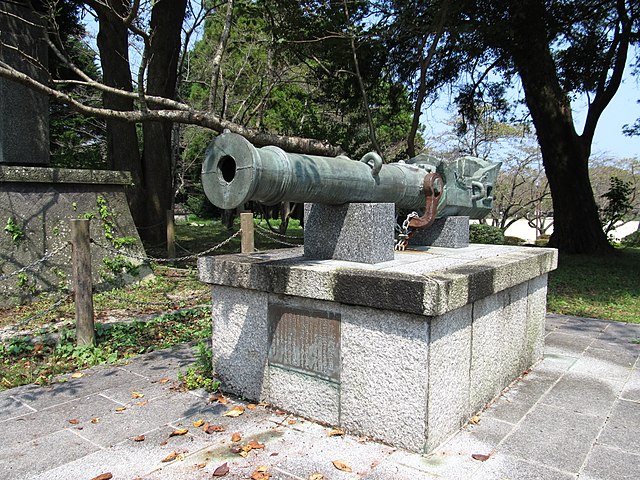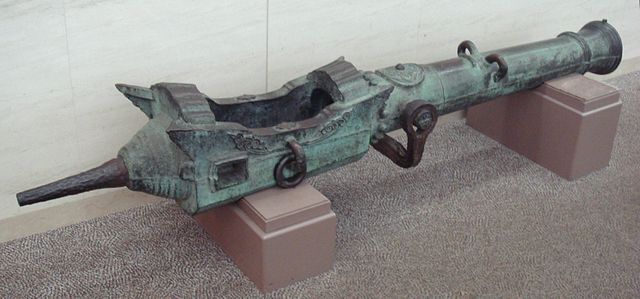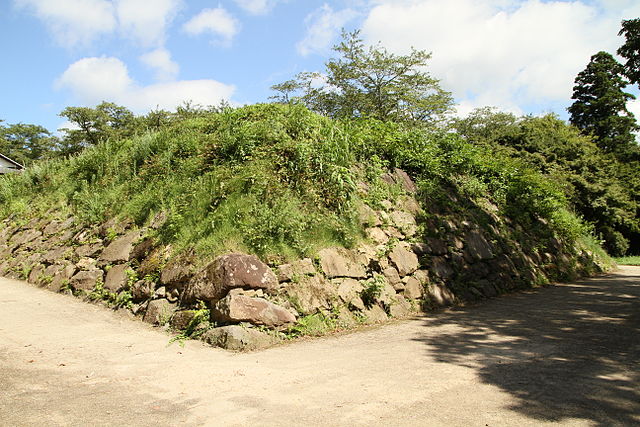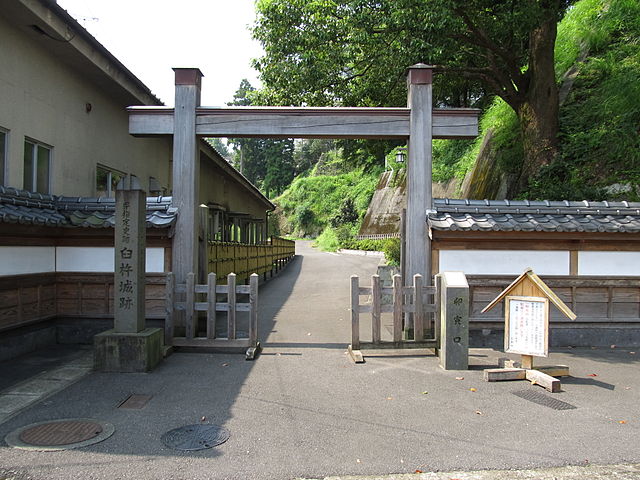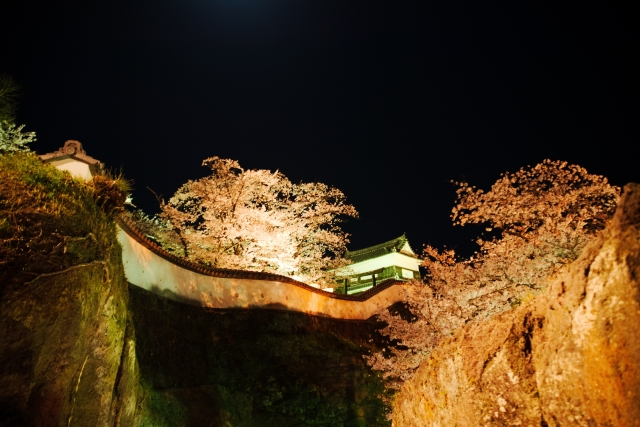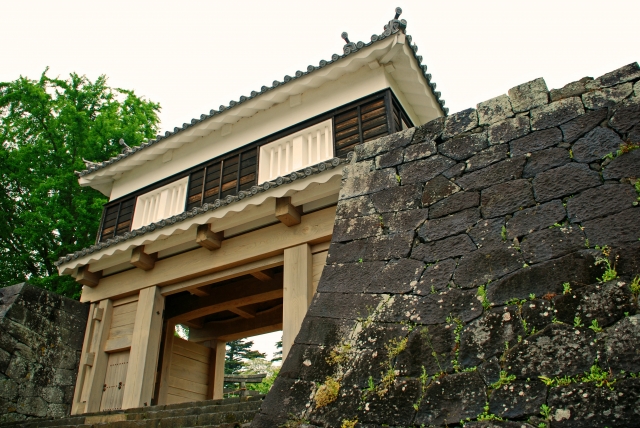日本で5本の指に入るほど大きな城でした。
It was one of the five largest castles in Japan.
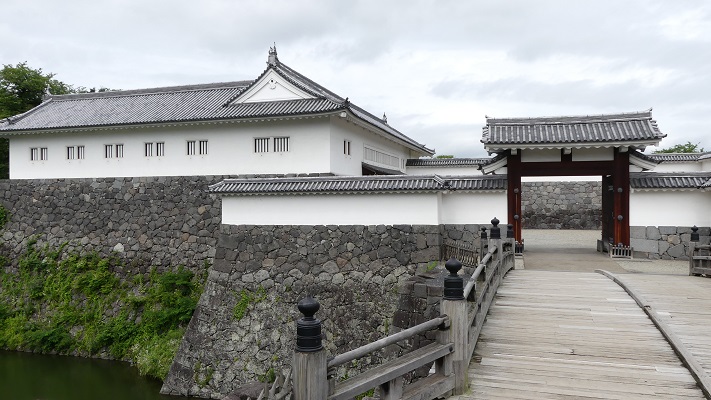
立地と歴史~Location and History
山形城は山形県南部の山形盆地にありました。現在、この地域は県都である山形市として発展してきています。南北朝時代に、斯波氏が羽州(現在の山形県と秋田県に相当)探題として送られてきて、最初にこの城を築きました。初期の頃この城は、足利氏館のように一重の堀に囲まれた四角い土地の上に館があったと思われます。そして、戦国時代のころには、三重の堀に囲まれるまでに拡張されました。
Yamagata Castle was located in the Yamagata Basin in the eastern part of Yamagata Pref. Now, this area has been expanding up to Yamagata City as the prefectural capital. In the Period of Southern and Northern Courts, the Shiba clan was sent to this area as the local commissioner in Ushu (combining now Yamagata and Akita pref.), and first built the castle. The early castle seemed to be a hall on a square land surrounded by a single moat like the Ashikaga clan hall. Then, the castle was improved to be surrounded by triple moats in the Warring States Period.
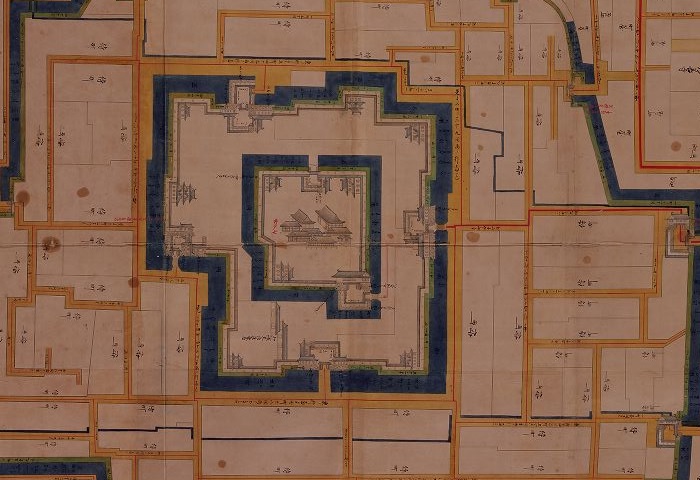
斯波氏の子孫である最上義光が、この城を日本で5指に入る大きな城として完成させました。彼は、南では伊達氏と、北では天童氏と、西では大宝寺氏と戦いました。義光は山形城を本拠地とし、そして戦いに備えるため約50もの支城を築きました。このうち最も有名なものは長谷堂城で、ここで1600年に最上氏と上杉氏が戦いました。
Shiba’s descendent, Yoshiaki Mogami, completed the castle making it one of the five largest castles in Japan. He fought with Date in the south, Tendo in the nouth, and Daihoji in the west. He set Yamagata Castle as his home, and built about 50 branch castles to prepare for battle. The most famous one was Hasedo Castle where Mogami and Uesugi battled in 1600.

結果として、義光は徳川幕府から57万石を与えられました。彼はその時点では日本で3番目の大大名となったのです。不幸なことに、後に最上氏はお家騒動により、幕府から改易されてしまいました。その後、いくつかの大名が城を維持するよう努めました。しかし、この城は大名たちにとって大きすぎました。最上氏以降の大名は皆石高がずっと少なかったからです。江戸時代の後半には城の一部分は既に荒廃していたと言われています。
As a result, Yoshiaki was given a fief of 570 thousand koku of rice by Tokugawa Shogunate. He became the third largest lord in Japan at that point. Unfortunately, Mogami clan was fired by the Shogunate later due to their internal troubles. After that, several lords tried to keep the castle. But the castle was too large for the lords because their earnings were much less than Mogami’s. It is said that part of the castle already fell into ruin in the late Edo Period.
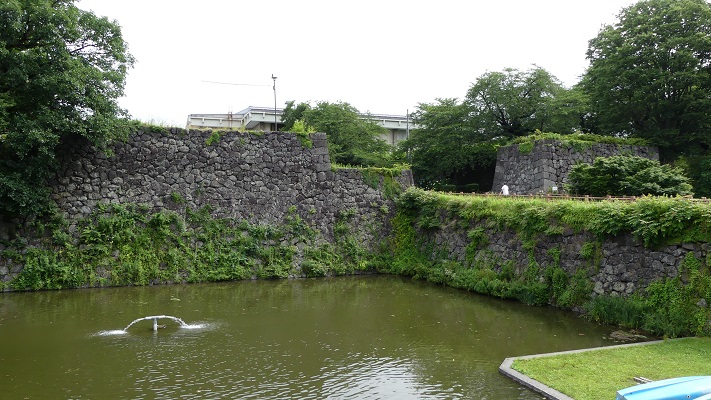
特徴~Features
現在、二重目の堀の内側は、霞城公園として使われています。堀の外側はかつての三の丸に該当しますが、山形市の市街地になっています。堀の内側は中心に向かって二の丸、本丸という構成です。四角い形をしていて、その一辺は500mほどです。
Now, the inside of the second rounding moat is used as a park called Ka-jo Park. The outside of the moat, once called Sannnomaru, has become the Yamagata city area. The inside consists of Ninomaru and Honmaru towards the center. It is square shaped and one side is about 500 meters long.
霞城公園は、何年にもわたって史跡公園として整備されてきました。その整備の一環で二の丸の東大手門が1991年に復元されました。この門は相当に大きくて、将軍が住んでいた江戸城の門にも匹敵するといいます。門の内側では、馬に乗った最上義光の銅像も見ることができます。
Ka-jo Park developed as a historical park over many years. With the development, the East Main Entrance Gate at Ninomaru called “Higashi-Otemon” was first restored in 1991. The gate is so large that its size might be as much as those of Edo Castle where the Shogun lived. You can see the statue of Yoshiaki Mogami riding a horse inside the gate.

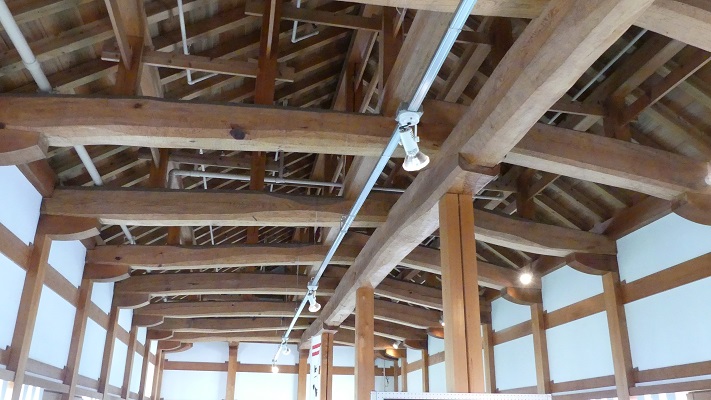
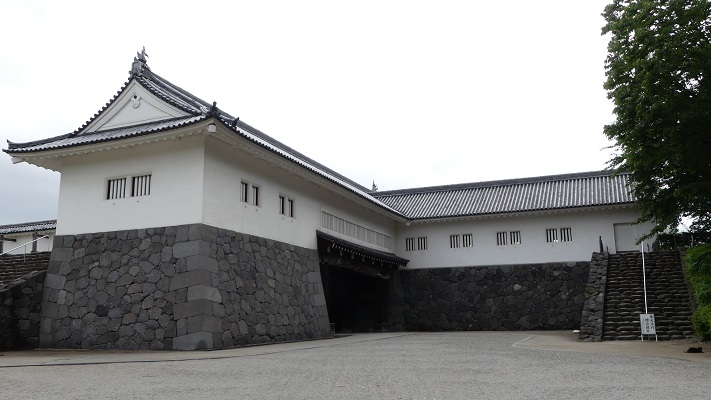
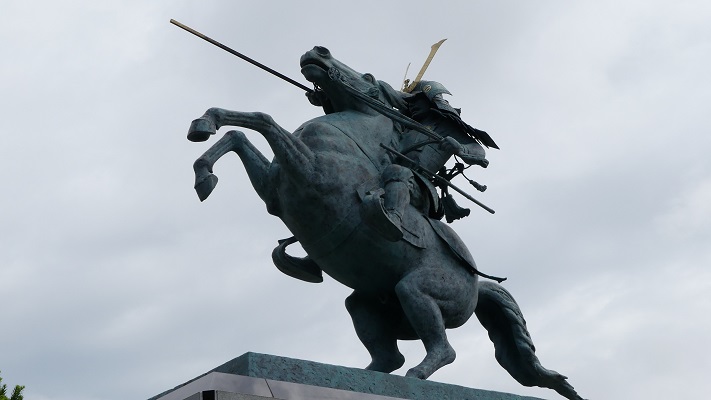
本丸は、現在発掘と整備の最中です。山形市は、本丸を復元するために古文書、
古写真、古図面の類を提供してもらうよう市民に呼び掛けています。しかし確かな証拠となるようなものは集まっていないようです。今のところ、本丸の正門である一文字門が、発掘の成果により部分的に復元されています。
You can also see Honmaru being excavated and developed now. Yamagata City has been asking people to send in old documents, pictures, and drawings to restore Honmaru. But it seems to be difficult to get certain evidence for doing it. So far, the main entrance of Honmaru, called Ichimonji-Gate, was partly restored recently with the excavation.
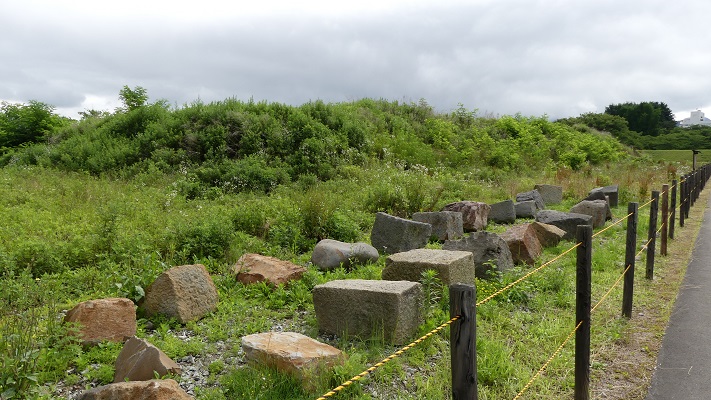

周辺の内堀もまた掘り返されています。本丸には天守はありませんでしたが、御殿が存在していました。市は御殿に関する何らかの展示を検討しています。また、2033年までに発掘を完了させ、本丸北虎口の復元を計画中です。
The inner moat around was also dug up again. Honmaru didn’t have the Tenshu keep, but had the Main Hall. The City is thinking about making an exhibition about it. It also plans to complete the excavation and restore the northern entrance of Honmaru by 2033.
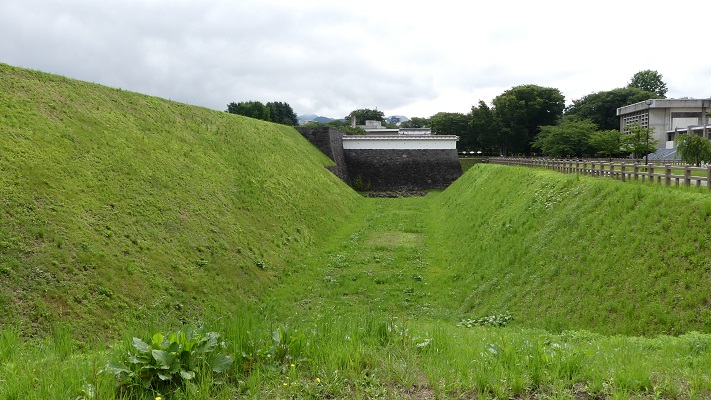
その後〜Later Life
明治維新後、山形城は廃城となりました。本丸と二の丸の区域は、山形市に売られていきました。山形市は、その土地を日本陸軍の第32歩兵連隊に基地用地として提供しました。軍隊は内部を平らにするために内堀を埋め、本末の土塁を取り崩しました。一方で桜の木を植えて、それが新たな名所になったりしました。
After the Meiji Restoration, Yamagata Castle was abandoned. The area of Honmaru and Ninomaru was sold to Yamagata City. The city offered the area to the 32nd infantry regiment of the Japanese Amy for their base ground. They filled the inner moat and removed the Honmaru walls to make the inside plain, while they planted cherry blossoms which have become an attraction for people.


第二次世界大戦後、この土地は霞城公園に転用されましたが、最初は運動公園としてでした。山形市は、公園についての整備方針を先程述べたように変更しています。野球場や体育館といった運動施設は、他の場所に移されているところです。三の丸区域は早い時期に町や畑になっていて、現在は山形市の市街地になりました。
After World War II, the area was turned into Ka-jo Park as a sports park first. Recently, Yamagata City has changed its policy about the park as mentioned above. Sport facilities like the baseball stadium and the gymnasium are being transferred to other places. The Sannomaru area turned early into towns and fields, now becoming the Yamagata city area.
私の感想~My Impression
霞城公園は今なおとても大きなサイズです。山形市が観光を振興したい気持ちはよくわかります。でも歴史的建造物というのは、過去の大名たちがそうだったように維持にはとてもお金がかかります。一方で、運動、釣り、気晴らしなど他の目的をもった人たちもたくさん来ます。公園を整備するのにうまくバランスを取ってほしいと思います。
Ka-jo Park is still very large. I can understand what Yamagata City wants to do for tourism. But, historical facilities require a lot of funds for maintenance like lords used to do in the past. On the other hand, many people who have other purposes like exercise, fishing, and relaxing come every day. I hope that the city will take well-balanced control to develop the park.
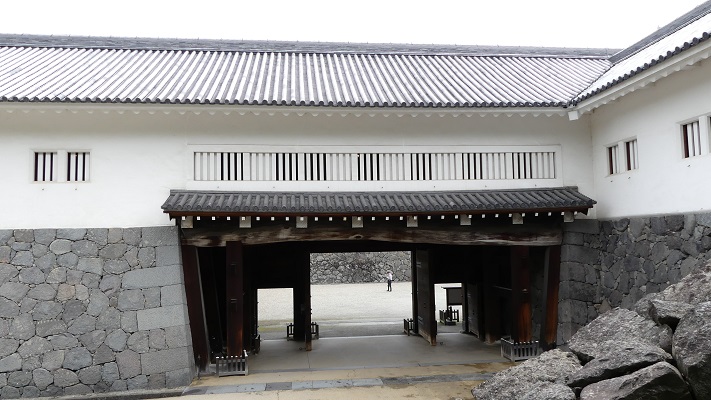
ここに行くには~How to get There
JR山形駅東口から二の丸東大手門まで歩いて約15分かかります。または、JR山形駅西口から二の丸南大手門跡まで歩いて約10分かかります。
東京から山形駅まで:山形新幹線に乗ってください。
車で行く場合:山形自動車道山形蔵王ICから15~20分かかります。霞城公園北門内側に駐車場があります。
It takes about 15 minutes From the east entrance of JR Yamagata station to the East Main Entrance Gate at Ninomaru on foot.
Or it takes about 10 minutes From the west entrance of JR Yamagata station to the ruins of South Main Entrance Gate at Ninomaru on foot.
From Tokyo to Yamagata st.: Take the Yamagata Shinkansen super express.
If you want to go there by car: It takes 15 to 20 minutes from the Yamagata-Zao IC on Yamagata Expressway. Ka-jo park offers a parking lot inside the north gate.
リンク、参考情報~Links and References
・山形市:国指定史跡山形城跡「霞城公園」~Yamagata City:Nationally designated historic site Yamagata Castle “Kajo park”
・「東北の名城を歩く 南東北編: 宮城・福島・山形」吉川弘文館(Japanese Book)
・「最上義光の城郭と合戦」保角里志著、戒光祥出版(Japanese Book)


